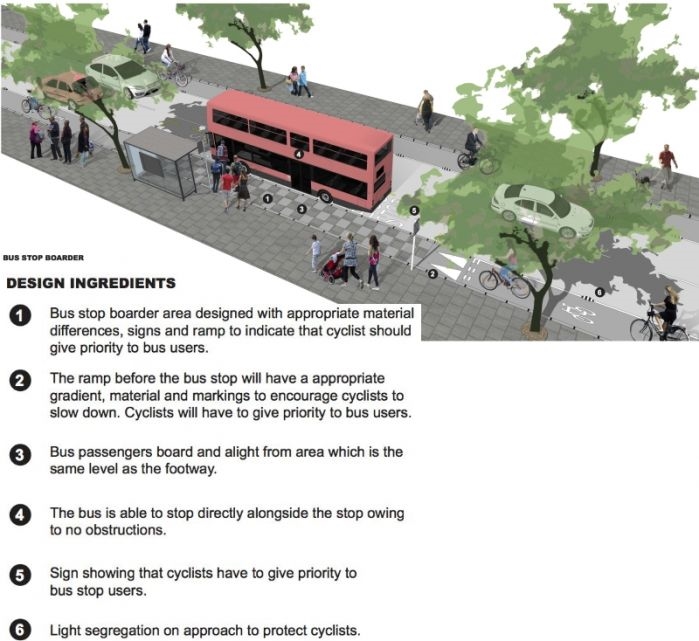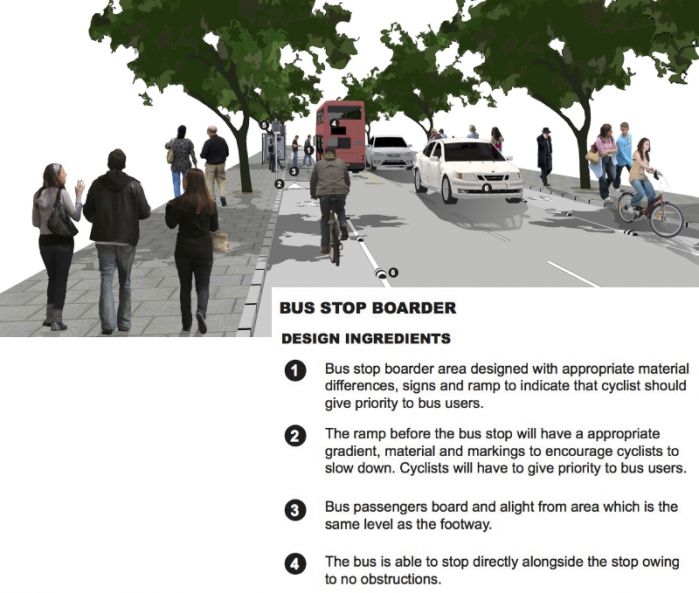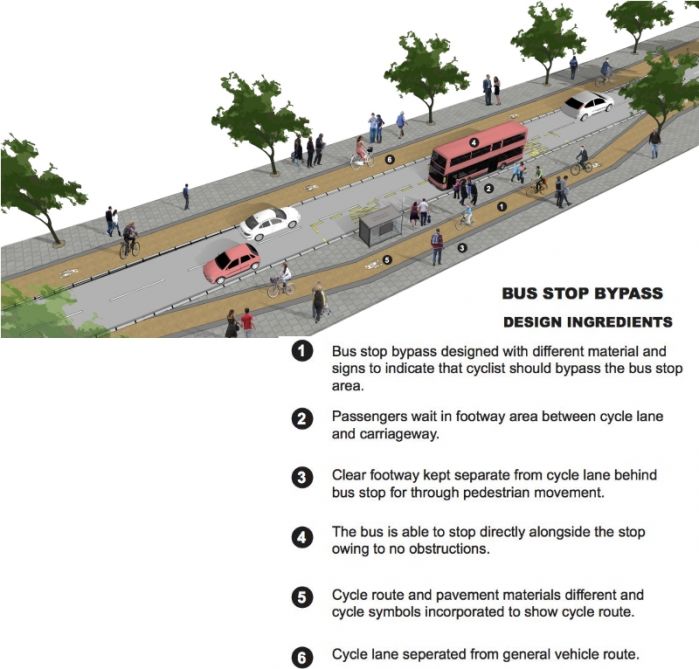The Cycle Enfield website includes the official responses to various criticisms of the A105 scheme. However, because people may not be aware of these, we are reproducing them here both to make them more widely known and to give readers an opportunity to comment and discuss them in our forums.
The following text is taken directly from Cycle Enfield without any amendment.
Impact on bus stops
A number of bus stops along the route would be changed – under current plans, six would be relocated. This would inconvenience some residents but bring improvements to others. Moving of bus stops is typically to make sure there is enough space for other motor vehicles to overtake buses at bus stops after the cycle route has been built (ensuring bus stops are not directly opposite each other in what will be a narrowed carriage way if cycle lanes are added).
Under current plans, two bus stops would be removed. The removal of bus stops has been proposed mainly in order to maintain as much car parking as possible at those points of the route.
Current TfL bus stop design guidance states that 400m is an ‘ideal spacing for bus stops’. All the proposed changes on the A105 keep bus stop gaps below 400m apart from the fox Lane stop (450m). However, pending the outcome of the consultation exercise, it may be possible to reduce this.
In summary:
- The southbound Bush Hill stop would be moved approximately 60m south with a distance of approximately 350m to the next stop to the north
- The southbound Conifer Gardens stop would be relocated approximately 30m south with a gap of 360m to the next stop to the north
- The northbound Station Road Green Lanes stop (by the Compton Road junction) would be relocated 30m to the north extending the gap to the stop further south to approximately 250m
- The southbound Highfield Road stop would be relocated about 170m to the north near the Queens Avenue junction opening up a gap of approximately 380m to the stop further south
- The northbound St Monica’s Church stop would be removed leaving a gap of approximately 350m between stops
- The southbound Bourne Hill stop would be relocated approximately 140m to the north east (past the Hedge Lane junction) creating a gap of approximately 370m to the stop further south
- The northbound Fox Lane stop would be removed leaving a gap of approximately 450m between stops (although other alternatives would be possible to keep gaps between stops shorter)
- The southbound Broomfield Lane stop would be moved south by approximately 100m leaving a gap of approximately 330m between stops.
To maintain a safe environment, the design of the cycle lane avoids people cycling having to join the flow of motor traffic to navigate around a stationary bus. Along this route there are two types of treatment at bus stops. Where space allows, bus stop bypasses will be introduced. This is where the cycle lane is directed behind the bus stop. Where less space is available, bus stop boarders are used. The images below show how these two different types of bus stops work. With bus stop boarders, at the bus stop there is a ramp in the cycle lane and a change in materials to indicate to people cycling that they need to give priority to pedestrians through this part of the route.



[Source: cycleenfield.co.uk/have-your-say/a105-scheme-consultation]




